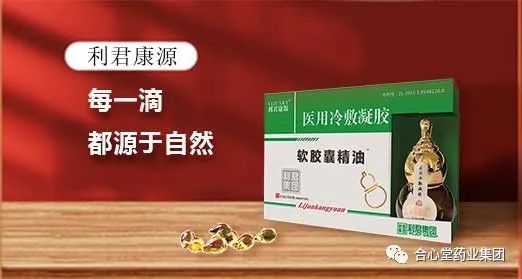
It is the season for colds, and many people are falling ill, asking what medicine to take. Faced with a dizzying array of cold medications in pharmacies, it can be hard to choose. Here, I summarize the confusions faced by many.
Whether it is influenza or a common cold, although they are quite different, they are essentially both colds and should be treated as such. Today, we will mainly discuss Wind-Heat Cold (feng re ganmao).
What exactly is Wind-Heat Cold?
What causes Wind-Heat Cold?
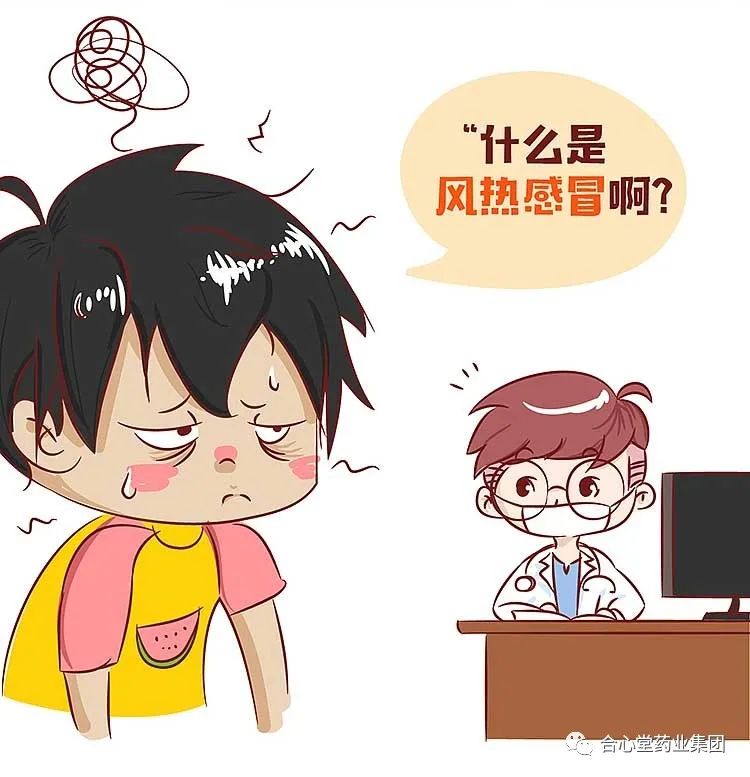
First, it is important to distinguish between heat and warmth. The heat here refers to the pathogenic heat (zheng qi) in nature, which is a type of evil qi. Pathogenic heat injures yin and depletes body fluids. Among the six types of natural evils: wind, heat, summer heat, dampness, dryness, and cold, wind acts as a carrier that can bring the other five types of evils into the body.
Thus, there is a saying that “wind is the chief of all diseases.”
Wind-Heat Cold occurs when one is affected by pathogenic heat. However, if the symptoms are purely due to heat, it is generally referred to as heat stroke (zhongshu).
Wind-Heat Cold can also cause a runny nose, where the nasal discharge is yellow and thick, and the phlegm is similar. The most important distinguishing feature is that Wind-Heat Cold will definitely cause a sore throat, which can be severe enough to make swallowing painful. Remember, if your cold starts with a sore throat, it is undoubtedly Wind-Heat Cold.
How to distinguish Wind-Heat Cold?
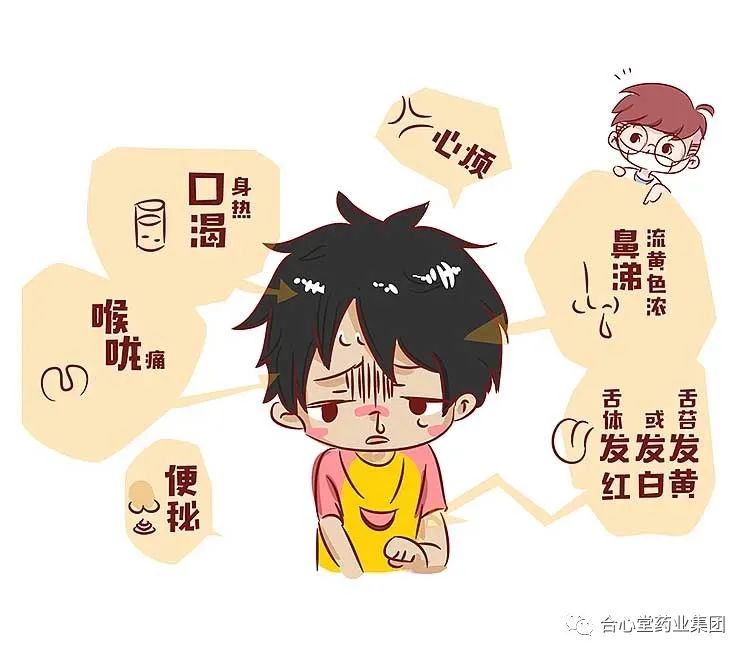
● Look at the cause: External invasion of wind-heat does not necessarily require a history of catching a cold.
External invasion of wind-cold usually has a very clear history of exposure to cold. In contrast, external invasion of wind-heat generally does not have a clear history of cold exposure but rather involves the body feeling the dry heat, allowing the external evil to invade the lungs, causing the lungs to lose their ability to disperse and descend.
● Look at the throat: Symptoms of dryness and swelling in the throat usually appear early.
While heat evils also like to invade the body from the surface, unlike cold evils, heat evils prefer to enter through the mouth and nose, attacking the throat and invading the lung defenses. The throat is the gateway to the lungs and stomach, serving as the first line of defense against external evils. Therefore, when the evil qi invades through the mouth and nose, the throat reacts immediately, leading to dryness, redness, and swelling. Cold has a constricting nature, while heat expands, easily causing swelling and ulcers. Thus, if the throat is painful and swollen early on, it is likely Wind-Heat Cold.
Of course, if the throat is only painful but not red or swollen, other causes should be considered.
● Look at sensitivity to cold and sweating: If sweating occurs and there is not much fear of cold, it is Wind-Heat Cold.
Cold evils constrict and close the skin pores, causing a person to feel cold and preventing sweating. In contrast, heat evils can open the skin pores, allowing sweating to occur. Sweating can deplete body fluids, leading to feelings of dryness, thirst, and a desire for water, along with symptoms of fluid deficiency.
● Look at nasal discharge and phlegm: Yellow phlegm and purulent nasal discharge.
As previously mentioned, “a bit of clear nasal discharge indicates a bit of surface cold.” Clear nasal discharge, white phlegm, and clear urine are all signs of cold symptoms. In contrast, heat symptoms are characterized by yellow purulent nasal discharge, yellow phlegm, yellow urine, and constipation.
● Look at fever: The severity of the fever and how high it is.
Pathogenic heat injures yin, and fever caused by external invasion of wind-heat often appears earlier and is more severe than fever caused by external invasion of wind-cold. Generally, within a day of the onset of cold symptoms, a fever can quickly develop, often reaching 39 degrees Celsius, with a flushed face, wet heat in the body, and a sensation of heat evaporating from within.
What causes Wind-Heat Cold?
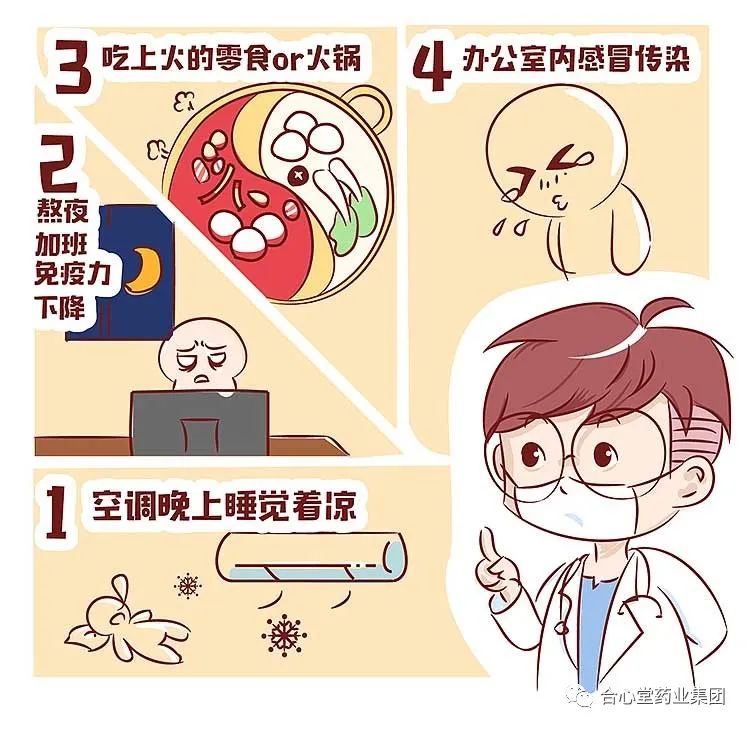
● Environmental factors
In the hot summer, people often take cold showers or use air conditioning to stay cool, which can lead to Wind-Heat Cold.
● Low immunity
Low immunity is an important factor in the onset of Wind-Heat Cold, as a weakened immune system allows viruses and bacteria to easily invade the body, leading to the occurrence of Wind-Heat Cold.
● Lifestyle habits
Irregular eating habits and excessive fatigue can damage the body, allowing bacteria and viruses to take advantage of the situation, leading to Wind-Heat Cold. It is important to avoid overexertion and to rest adequately to prevent Wind-Heat Cold.
● Disease factors
Many individuals may suffer from tonsillitis, rhinitis, and other respiratory diseases, which can lower immunity. Coupled with external environmental influences, this makes it particularly easy for patients to develop Wind-Heat Cold.
How to prevent Wind-Heat Cold?
● Mint Congee (selected from “Song Yu Lu”)
Prepare mint juice by boiling mint, let it cool, then add it to glutinous rice cooked with water to make congee. When the congee is nearly done, add the mint juice and an appropriate amount of rock sugar.
Consume slightly warm for best results. Mint is a key herb for dispersing wind-heat, and when combined with glutinous rice and rock sugar, it promotes sweating and protects the stomach. This congee is most suitable for those with new Wind-Heat Cold.
● Focus on light foods
In summer, the diet should be light, avoiding greasy, spicy, and raw foods. Mung bean congee and lotus seed and lily congee are suitable for summer consumption, helping to cool and prevent heatstroke. Eating more fruits and vegetables can replenish vitamins, enhancing immunity and effectively preventing colds.
● Li Jun Kang Yuan Soft Capsules
Utilizing the properties of medicinal oils to dispel wind and heat, the ingredients include mulberry leaves, chrysanthemum, apricot kernel, forsythia, platycodon, licorice, reed root, and mint. The medicine quickly enters the body, alleviating a series of symptoms caused by Wind-Heat Cold.
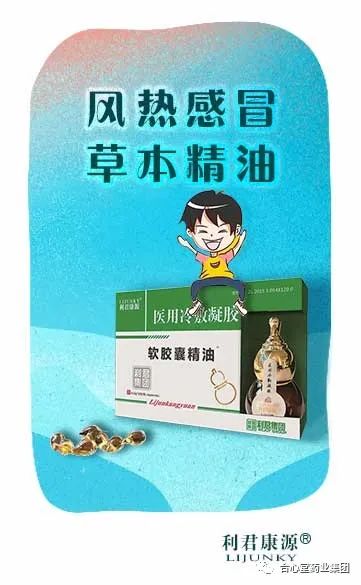
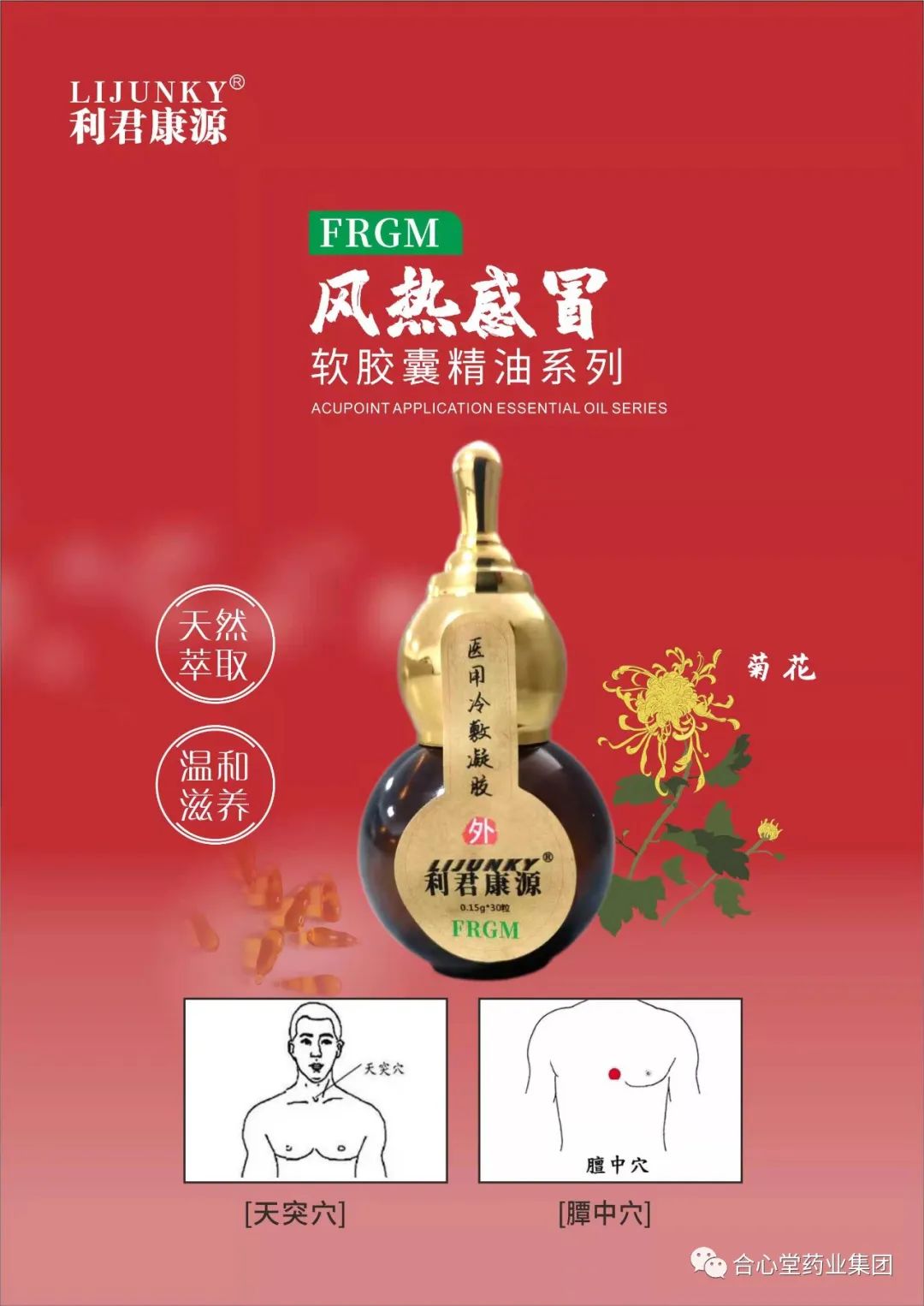
● Application method
Apply 2 drops each to the Tian Tu (天突) and Dan Zhong (膻中) points, and apply the remainder to the Shen Que (神阙) point, covering with a navel patch. For children, the application time is 2-4 hours. The navel is the Shen Que point, the area between the breasts is Dan Zhong, and just below the throat is Tian Tu.
If other symptoms accompany Wind-Heat Cold, apply 3 drops each to the Da Zhui (大椎) and Dan Zhong points, and apply one patch each.
